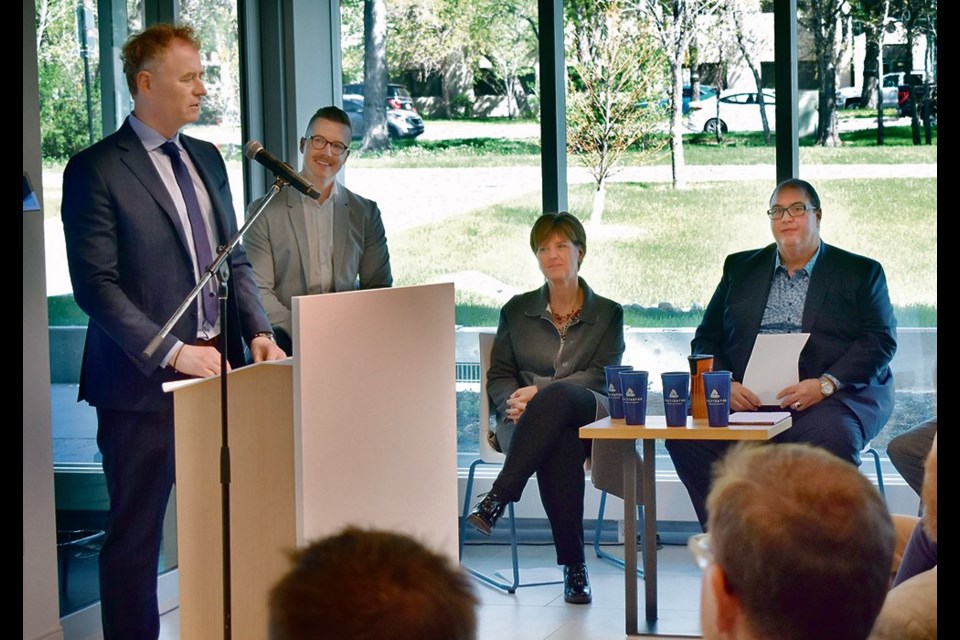ROSETOWN — AGT Food and Ingredients and Lucent BioSciences developed the micronutrient fertilizer, which will be made in Rosetown
Protein Industries Canada and partners have announced a $19-million micronutrient fertilizer plant planned for Rosetown, Sask.
Project organizers plan to renovate an existing facility to turn pea, lentil and oat hulls, now considered production byproducts, into a fertilizer called Soileos.
PIC committed $7 million with the rest coming from private investors.
Regina-based AGT Food and Ingredients and Vancouver-based Lucent BioSciences partnered to develop Soileos. NuWave Research, IN10T and Aberhart Ag solutions also assisted in the process.
“We expect to assist producers in addressing their key challenge, micronutrient deficiencies in plant production, while at the same time improving their yields and reducing their carbon footprint, adding carbon back into the soil and increasing agricultural production in a measurably sustainable fashion,” said AGT Food and Ingredients president and chief executive officer Murad Al-Katib.
The project is the initial commercialization and first manufacturing plant for the product, which federal agriculture minister Marie-Claude Bibeau said comes at a vital time as Russia’s invasion of Ukraine has disrupted fertilizer markets.
“This project is a win for our farmers, a win for our food processors, for our economy, and it’s a win for our environment,” said Bibeau, “This is more proof that economic solutions can also be ecological solutions.”
Current nitrogen fertilizers result in nitrous oxide greenhouse gas emissions that can potentially cause almost 300 times the global warming impact as carbon dioxide, according to Agriculture Canada.
“Over the course of several years, we’ve invented a new type of fertilizer by replacing synthetic and salt-based chemicals with cellulose fibre,” said chief executive officer of Lucent Michael Riedjik.
“Existing fertilizer products are based on old technologies,” said Riedjik. “Some of them over 100 years old. And those products were never invented with sustainability in mind.”
“Our product requires 50 percent less water to manufacture, it uses 60 percent less energy to manufacture and most of all, our product is the first fertilizer on the market that actually sequesters carbon in a ratio of one to two.”The plant is expected to create 25 jobs and produce about 6,500 tonnes of Soileos per year beginning in late 2023, which will impact 1.5-million acres across North-America.
Al-Katib said he thinks it is only the beginning.
“We see the potential for the Soileos product in food production regions around the globe,” said Al-Katib. “Agriculture is at the forefront, providing a societal solution to the world’s problems, including global protein availability, food availability, renewable fuels, and tackling climate change.”
Soileos production will expand gradually, he said, and farmers will take time to transition. Traditional fertilizing methods will continue to be necessary.
However, this project takes a substantial step toward sustainable eco-friendly fertilization methods, he said.
Saskatchewan agriculture minister David Marit said he thinks farmers will adopt Soileos.
“I think once they see the value in it and what it does for soil and plant health, you’ll see farmers transition to it.
“When they can see opportunity to grow more and improve soil health, that’s what’s going to drive this whole innovation.”

